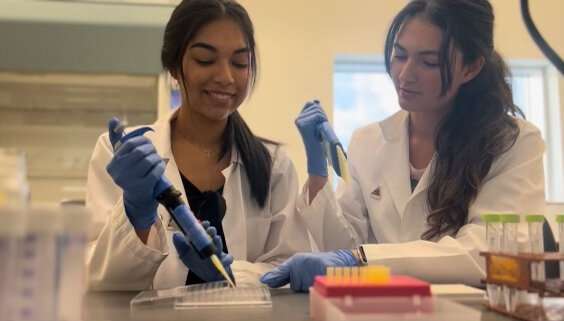New research on antibiotic-resistant bacteria may be a step toward new treatments for infections

Antibiotic-resistant bacteria pose one of the greatest threats to global public health. In 2019, deaths due to antibiotic resistant bacteria outpaced deaths due to HIV and malaria. Given the lack of innovation in the discovery of new antibiotics, it is critical to determine the mechanisms by which bacteria tolerate existing antibiotics so that we can improve their effectiveness.
One way that bacteria can tolerate antibiotics is through the inoculum effect. Essentially, the higher the density of bacteria in an infection, the more antibiotic is required to treat the infection. While the inoculum effect has been observed for nearly all known antibiotics, and has been documented since the 1960s, a common mechanism to explain inoculum effect for multiple antibiotics has not been found until now.
Scientists recently discovered that interactions between how fast bacteria grow and the amount of energy (or metabolism) bacteria have can explain the inoculum effect for multiple antibiotics and bacteria species. This new research also shows that providing the bacteria with different nutrients that change growth rate and energy levels can eliminate the inoculum effect.
The research paper was just published in Science Advances.
“Our discovery is the first step towards discovering new antibiotics that can be used to successfully treat very challenging high bacterial density infections,” said Robert P. Smith, Ph.D., associate professor and research scientist, Cell Therapy Institute at Nova Southeastern University’s (NSU) Dr. Kiran Patel College of Allopathic Medicine (NSU MD). “We hope that our work will eventually save lives as we deal with the growing threat of antibiotic-resistant bacteria.”
This research has the potential to reduce the amount of antibiotics used in the clinic and may pave the way for the discovery of new antibiotics that change growth rate and energy levels in bacteria.
The research was led by Gabriela Diaz Tang and Estefania Marin Meneses, both of whom are graduate students at NSU. The work also involved Christopher Blanar, Ph.D., from NSU, Dr. Allison J. Lopatkin from Barnard College of Columbia University, and multiple graduate and undergraduate students at NSU.
More information:
Gabriela Diaz-Tang et al, Growth productivity as a determinant of the inoculum effect for bactericidal antibiotics, Science Advances (2022). DOI: 10.1126/sciadv.add0924
Citation:
New research on antibiotic-resistant bacteria may be a step toward new treatments for infections (2022, December 15)
retrieved 16 December 2022
from https://phys.org/news/2022-12-antibiotic-resistant-bacteria-treatments-infections.html
This document is subject to copyright. Apart from any fair dealing for the purpose of private study or research, no
part may be reproduced without the written permission. The content is provided for information purposes only.
For all the latest Science News Click Here
For the latest news and updates, follow us on Google News.

